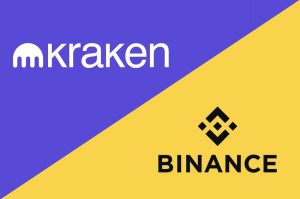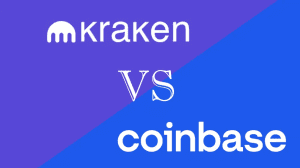Centralized Exchanges Explained – CEX Beginners Guide

Centralized exchanges (CEXs) are one of the most common ways to buy, sell, and trade cryptocurrencies. They are digital platforms operating under a centralized authority, meaning they have control over users’ funds and transactions. Their main role is acting as intermediaries between buyers and sellers, facilitating trades and charging a fee for every transaction.
This guide explains everything you need to know about centralized exchanges, how they work, their pros and cons, and how to use them. We will also tell you about the most renowned CEXs today.
Plain English – no technical jargon.
Centralized Exchanges – A Brief Summary
Here are some key notes about CEXs:
- Centralized exchanges are the most popular crypto exchanges.
- They operate under central authorities and control customers’ funds and transactions.
- Their interface is more user-friendly than decentralized peers, with faster transaction speeds.
- CEXs act mainly as middlemen between buyers and sellers.
- They charge a commission fee for every transaction.
- You must create an account and verify your identity to use a centralized exchange.
What Is A Centralized Exchange And How Does It Work?
Centralized exchanges are cryptocurrency exchanges with a central authority managing and operating the exchange. These exchanges control users’ funds and transactions, and users rely on the exchange to facilitate their trades. CEXs are more common and more popular than their decentralized counterparts because they provide a more user-friendly interface and faster transaction speeds.
CEXs function as a middleman between buyers and sellers, and they charge a fee for every transaction they facilitate. Users can deposit cryptocurrencies or fiat currencies into their accounts and use those funds to buy or sell cryptocurrencies. CEXs typically have a user-friendly interface that makes it easy for users to place trades, track their transactions, and manage their accounts.
Users must create an account and verify their identity to use a centralized exchange. Then, they can deposit funds into their account and start trading cryptocurrencies. For example, customers can place buy and sell orders, track transactions, and manage their accounts through the exchange’s user-friendly interface.

CEX Pros And Cons
One of the main advantages of centralized exchanges is their user-friendly interface. They are easy to use and navigate and provide fast transaction speeds. CEXs also offer a wide range of trading pairs and have high liquidity, which means that users can buy and sell cryptocurrencies quickly and easily. Additionally, they provide advanced trading features such as margin trading and stop-loss orders, which are unavailable on decentralized exchanges.
However, the most significant disadvantage of CEXs is that users do not have complete control over their funds. Users must trust the organization to keep their funds safe and secure, which can be risky if the exchange is hacked or the central authority is compromised. Additionally, centralized exchanges can be more susceptible to regulatory pressure, leading to issues such as frozen funds or account closures.
Renowned Centralized Crypto Exchanges
There are many centralized exchanges available in the market, and some of the most popular ones include Binance, Coinbase, Kraken, and Bitfinex.
Coinbase
Coinbase is another well-known crypto exchange, with over 35 million users worldwide. It has a user-friendly interface and a wide variety of trading pairs, including Bitcoin, Ethereum, and Litecoin. Moreover, this CEX is also known for its high liquidity and security features. Therefore, it is a trusted platform for many investors.
Binance
Binance is one of the most popular centralized crypto exchanges, with a global user base of over 15 million. It offers a wide range of trading pairs, low fees, and a user-friendly interface. Binance also provides advanced trading features, such as margin trading, futures trading, and spot trading, making it a popular choice among both beginners and experienced traders.
Kraken
Kraken is a well-established crypto exchange with over 7 million users worldwide. It offers a wide range of trading pairs, including major cryptocurrencies such as Bitcoin and Ethereum, as well as lesser-known altcoins. Furthermore, Kraken uses state-of-the-art trading features, including margin trading, futures trading, and OTC trading.
Bitfinex
Bitfinex is a centralized crypto exchange famous for its high liquidity and advanced trading features. It offers a wide range of trading pairs, including major cryptocurrencies such as Bitcoin, Ethereum, and Litecoin, as well as lesser-known altcoins. Bitfinex also provides advanced trading features, such as margin trading and lending.
Huobi
Huobi is a popular CEX with over 5 million users worldwide. It offers a wide range of trading pairs, low fees, and a user-friendly interface. Huobi is also known for its high liquidity and security features, which is why it is one of the top exchanges for users.
Frequently Asked Questions
Here’s more information about CEXs
What is a centralized exchange?
Centralized exchanges are centralized authorities for buying, selling, and trading cryptocurrencies. They control users’ funds and transactions and their main role is acting as intermediaries between buyers and sellers, facilitating trades and charging a fee for every transaction. They are like stock exchanges but for cryptos.
What is the difference between centralized and decentralized exchanges?
Unlike CEXs, decentralized exchanges don’t have a single entity or authority managing and operating the exchange. Instead, trades and transactions are automated
Is Binance a centralized exchange?
Binance is one of the most popular CEXs with millions of users worldwide.
Is Coinbase a CEX?
Coinbase is another trusted centralized exchange with 35 million users worldwide.
Centralized Exchanges – Final Words
In conclusion, centralized exchanges are a popular and user-friendly option for buying and selling cryptocurrencies. They offer fast transaction speeds, a wide range of trading pairs, and advanced trading features. However, users must be aware of the risks associated with trusting an exchange to manage their funds and transactions.
Crypto trading (trading in general, actually) is always a risky business because the industry is volatile. Therefore, make smart choices and don’t invest more than you can afford to lose.






1 thought on “Centralized Exchanges Explained – CEX Beginners Guide”